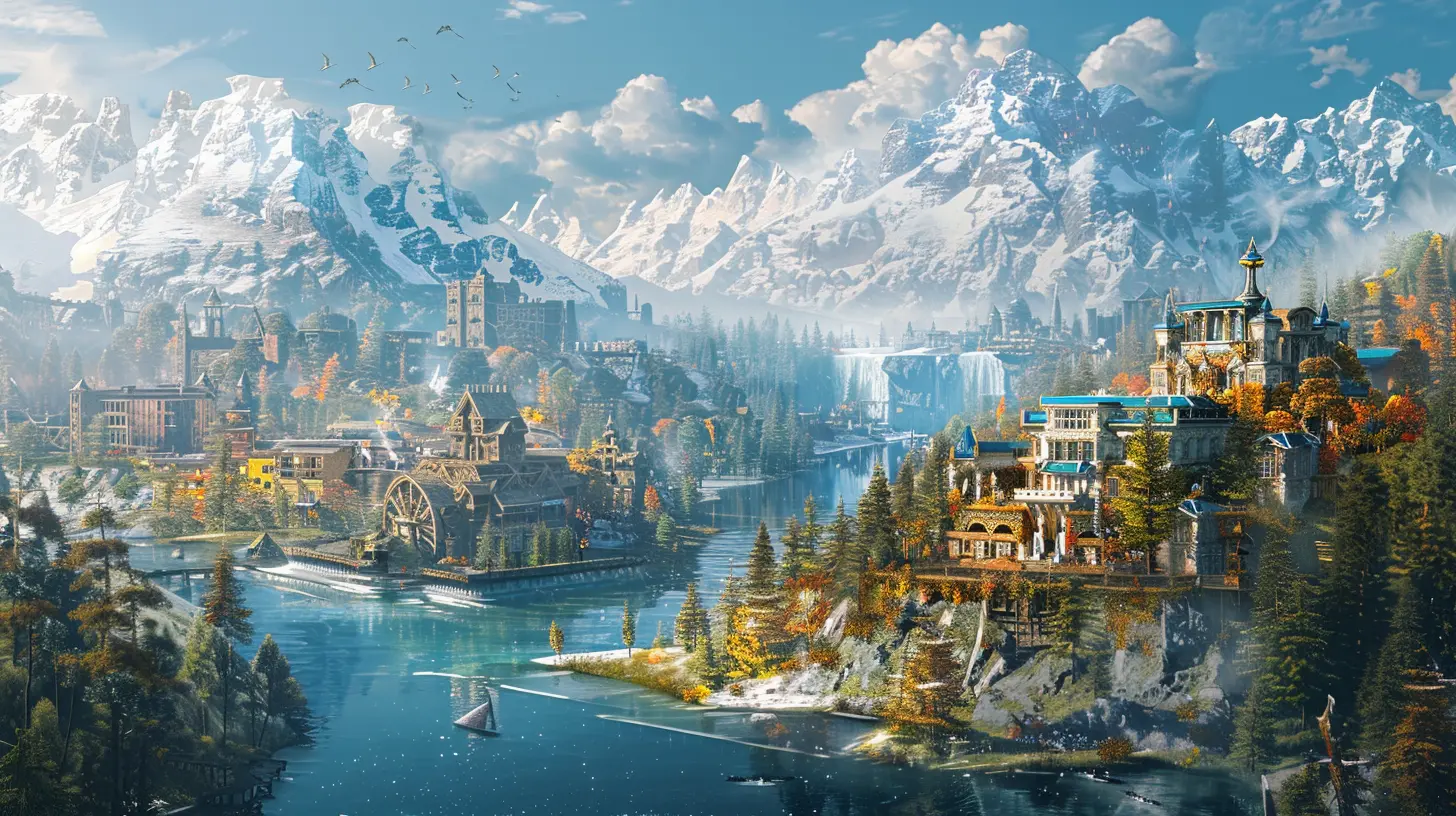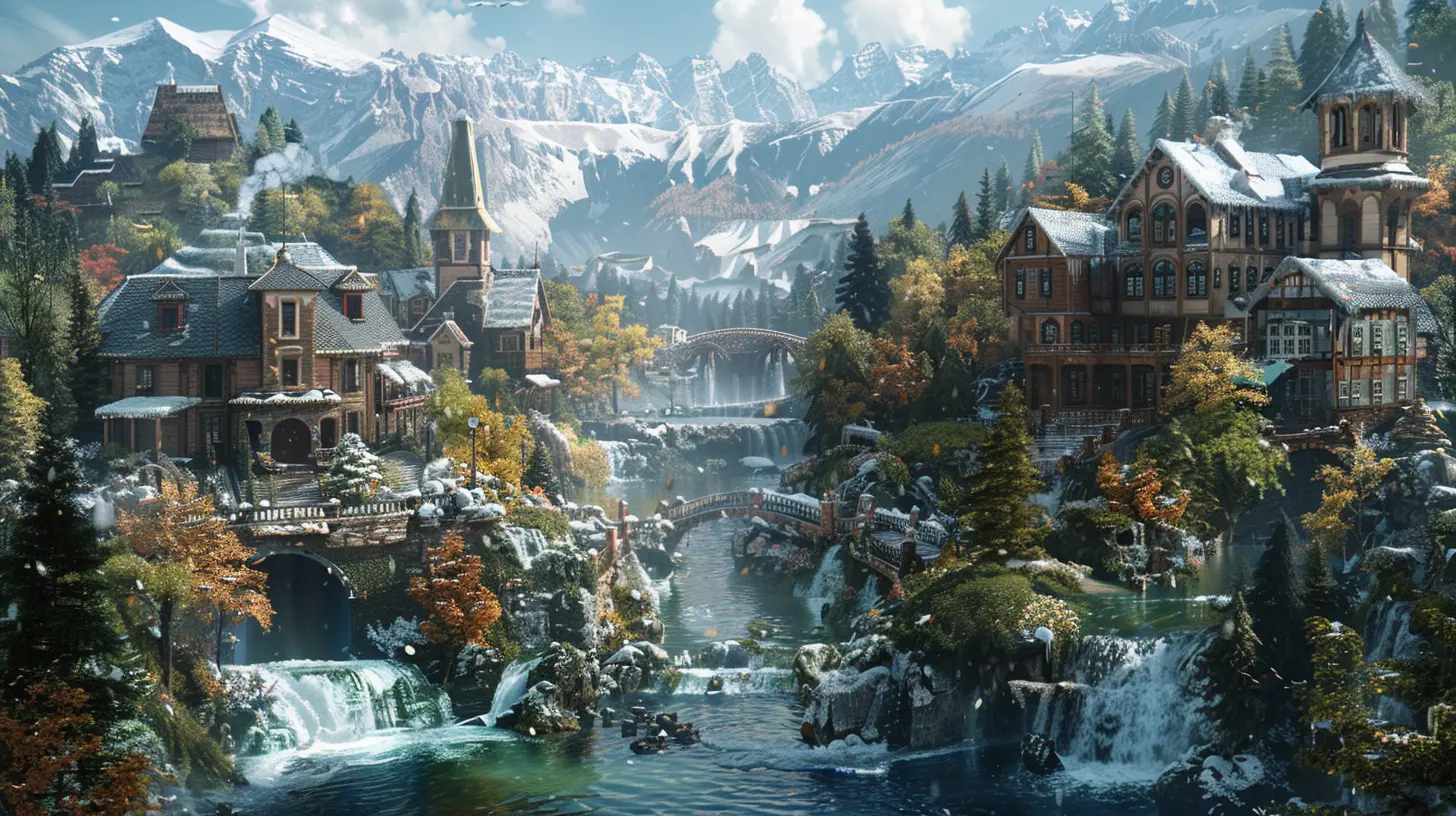Urban vs. Rural: World Building for Varied Environments in Game Design
15 November 2025
Ever found yourself mesmerized by a bustling digital cityscape or oddly comforted by a quiet, pixelated farming village? You're not alone. Whether we're racing through concrete jungles or strolling through countryside landscapes, environments in games shape everything — mood, gameplay, storytelling, and even how we emotionally connect with the experience.
In this article, we’re diving into the world of world-building (yes, that sounds redundant, but roll with it). Specifically, we're looking at urban vs. rural environments in game design and how each brings a unique flavor to the gaming soup. Buckle up, game devs, writers, and fellow daydreamers. This one’s gonna spark your creative circuits.
Why Environment Matters More Than You Think
Let’s clear something up — environments aren’t just fancy backgrounds. They breathe life into your game. They’re the silent narrators, screaming personality without saying a word. Whether it's a neon-drenched cyberpunk metropolis or a sleepy mountain village, an environment can hook players in faster than a cutscene ever could.Think about it: Would Skyrim feel the same if it all took place in one endless city? Would Stardew Valley tug at your heartstrings if it all happened downtown?
Exactly.
Urban Game Worlds: The Heartbeat of Humanity
Urban environments bring energy — a kind of raw, unfiltered pulse that makes you feel like you're always part of something bigger. Imagine crawling through the back alleys of Gotham or parkouring across the rooftops in Mirror’s Edge. Urban worlds throw you right into the chaos, the politics, the noise, and the infinite stories written in every graffiti tag and flickering streetlight.Perks of Urban Landscapes in Games
- Density of Possibilities: In a city, things are close. Shops, NPCs, missions — you can cram them all into a few blocks. More interactions, less travel time.- Layered Storytelling: Cities have history. You can stack narratives on top of each other like apartment buildings. One neighborhood can tell a completely different tale than the one next door.
- Modern Conflict and Connectivity: Cities are great for socioeconomic dynamics. Want to talk about class divisions, power struggles, or tech surveillance? Urban worlds are your canvas.
- Technological Playground: Wanna introduce hacking gameplay, drones, or AI companions? Urban settings practically beg for high-tech mechanics.
Games That Nailed Urban World-Building
- Cyberpunk 2077 – Controversies aside, Night City is a beast. Every neon sign, shady alley, and mega-corp building oozes atmosphere.- Grand Theft Auto V – Los Santos feels alive, from traffic jams to street performers.
- Persona 5 – Tokyo isn’t just a map; it’s part of the story. Taking the subway has never felt so cinematic.

Rural Game Worlds: Serenity Meets Struggle
Now let’s head out of town.Rural environments, on the other hand, slow things down — and that’s not a bad thing. They’re immersive in different ways. Forests whisper secrets. Mountains dare you to climb them. Fields grow not only crops but the seeds of inner journeys. In a rural world, you’re not surrounded by a million systems. You're alone... and that can be powerful.
Strengths of Rural Settings
- Pacing and Mood: Rural worlds lend themselves to introspection, exploration, and emotional depth. Perfect for RPGs, survival games, or narrative-driven experiences.- Resource-Based Gameplay: Farming, fishing, crafting — the countryside is a gameplay sandbox.
- Natural Beauty and Realism: Weather, wildlife, seasons — rural worlds let nature take center stage. Immersion goes through the roof.
- Space for Discovery: You decide what’s important. That hill might just be a hill — or the site of an ancient altar.
Games That Mastered Rural Design
- Red Dead Redemption 2 – From the swamps of Lemoyne to the snowy peaks of Ambarino, this game is a rural masterclass.- Stardew Valley – Simple? Sure. But it builds community, personal growth, and nostalgia like no other.
- The Legend of Zelda: Breath of the Wild – The rural wilds of Hyrule are an open invitation to explore, survive, and discover.

Urban vs. Rural: Key Differences in Game Design
Let’s break it down in a way only nerds like us can appreciate — side by side.| Feature | Urban | Rural |
|--------|-------|-------|
| Pacing | Fast | Slow |
| Exploration Style | Vertical, compact | Horizontal, expansive |
| Mood | Energetic, chaotic | Calm, reflective |
| Story Themes | Politics, society, tech | Nature, solitude, identity |
| Visual Style | Structured, architectural | Organic, scenic |
| Gameplay Focus | Interactions, missions | Crafting, survival, discovery |
Both can be complex, diverse, and beautiful — they’re just walking different paths to the same goal: immersion.
Why Not Use Both?
Here’s the kicker: You don’t have to choose.Some of the best games out there weave urban and rural settings into a dynamic whole. It’s like giving players two games in one, each complementing the other.
Mixed Worlds in Gaming
- The Witcher 3 – You’ve got sprawling countrysides and dense cities all coexisting. Novigrad feels like a living city, while the Skellige Isles are raw nature in full force.- Assassin’s Creed Series – Every game pairs rural exploration with urban parkour.
- Horizon Forbidden West – Post-apocalyptic, sure. But the game balances nature's reclaiming of the land with remnants of urban ruins.
When you use both, you create contrast — and that’s design gold. Think of it like music: without quiet moments, loud ones lose their impact. By blending urban edge with rural soul, you give players emotional variety and gameplay diversity.
Creating Compelling Environments — Some Quick Tips
Alright, so you want to build a world that feels alive? Here's a cheat sheet (you’re welcome):1. Tie Environment to Story
Don’t just slap a forest there. Ask yourself — why’s the forest there? Is it enchanted? Hiding a kingdom? Haunted by memories of a war? Let your setting tell a story without dialogue.2. Use Sound and Atmosphere
Urban buzz and rural silence — both are powerful. Use ambient sounds to enhance immersion. Think sirens vs. cicadas.3. Populate Smartly
In cities, crowd density and NPC loops matter. In rural zones, make your characters count. Every farmer or hunter should feel integral.4. Let Players Affect the World
Whether it’s gentrifying a city neighborhood or restoring a rundown farm, players love leaving their mark. Let your environments evolve with their actions.5. Lean into Limitations
Tight alleyways or wide-open fields – design with intention. If space is limited, push verticality. If it’s vast, use that space to your advantage with travel and discovery systems.The Emotional Impact of Place
Urban? You feel the tension, the ambition, the loneliness in a crowd. Rural? You feel the peace, the reflection, the slow drip of time.Environments create emotional playgrounds. They set boundaries and break them. They’re as much a character as any hero or villain. When done right, they don’t just support the game — they are the game.
So, Which Should You Choose?
It depends on your vision.If your story tackles societal structures, tech, power plays — urban is your jam.
If your journey is about personal growth, nature, escape — go rural.
If you want both (and why wouldn’t you?), blend ‘em. Let your game breathe in both chaos and calm, steel and soil, noise and silence.
Let’s stop thinking of “urban vs. rural” as a battle. It’s a duet.
Final Thoughts
World-building isn’t about filling space. It’s about meaningfully shaping it. Cities and countrysides aren’t just different locations — they’re different ways of seeing the world, feeling the world, and playing in it.Whether it’s the echoing footsteps in a rain-slick alley or the rustle of leaves on a quiet hill, environments speak. As a game designer, it's your job to help them say something unforgettable.
So, next time you're sketching out your game world, ask yourself one simple question: What do I want my players to feel?
Everything else will follow.
all images in this post were generated using AI tools
Category:
World BuildingAuthor:

Greyson McVeigh

